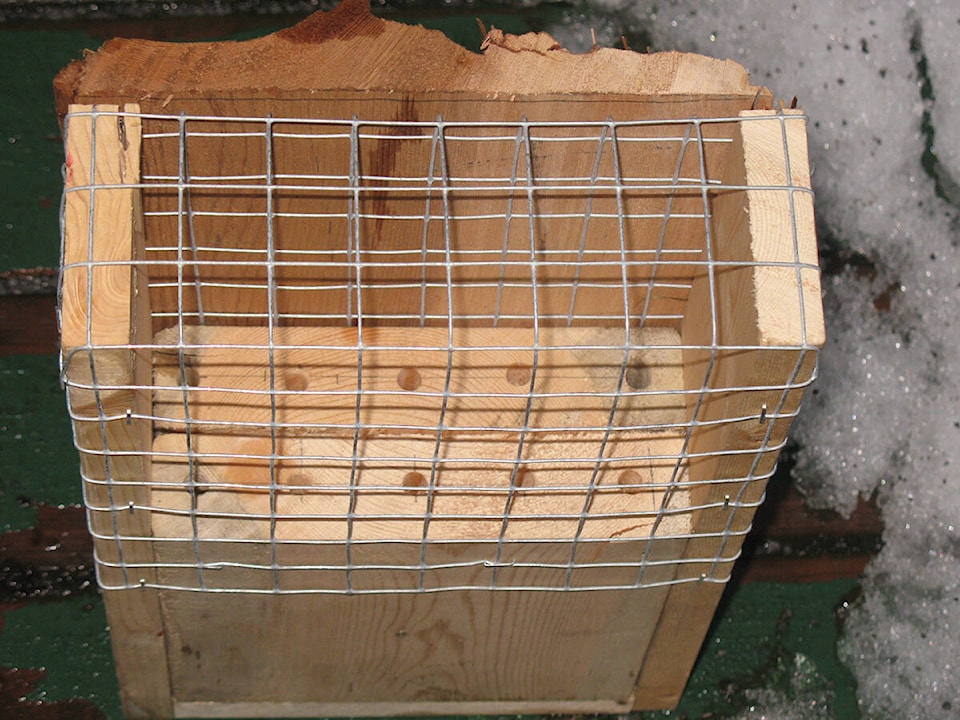By Mary Lowther
The decline in bee populations poses a serious problem for food production worldwide, which unfortunately includes my garden. Without these happy little workers to do the job for me I have had to take a brush out and pollinate my fruit trees by hand! This was time consuming enough when I had a half dozen trees, and now that I have 80 of them it has become obvious I need to hire new staff.
That’s why David is making some mason bee nests, so we can install them in their wild habitat next month when they start building nests for their eggs. At summer’s end the nests with mud capped holes, indicating that bee eggs were laid inside, can be transferred to our orchard so the hatchlings can spare me the labour. The blue orchard bee, also called the mason bee, hatches during early spring when fruit trees bloom, at just the right time to spread the pollen that produces fruit. Mason bees got their name because they use mud to seal their eggs in tiny holes wherever they can find them. They install the eggs with pollen and nectar for nourishment and seal them with mud to develop into adults. The mother bee returns again and again, filling up the hole with more eggs until the tunnel is full, then she caps it off with more mud.
Margriet Dogterom, in her book Pollination With Mason Bees, suggests the holes in built nests should be 7.5 millimetres (5/16 inches) wide and 15 centimetres (6 inches) deep. The width provides access and the depth discourages predation by woodpeckers. Longer tunnels also produce more females, which is a good thing since the males have no interest in pollination; they exist simply to impregnate their sisters and then die off, leaving the females to do all the heavy lifting.
Fortunately David has a longer lifespan and is available for selective delegation. He can be very useful, but his idea of construction frequently strays from the utilitarian to the baroque. When I asked him for some strawberry cages his first design had flying buttresses! This time I very carefully explained that I wanted simple nests with no minarets or parapets, and thought I had nipped his architectural pretentions in the bud, but he found a passage that said mason bees locate their nests through visual landmarks and insists this constitutes a mandate to embellish. We have compromised, and he has agreed to build nothing that would require a permit from the regional district.
As I mentioned, woodpeckers are the predators we seek to discourage, so the nests need to be protected by 2.2 centimetre (1 inch) wire mesh. This needs to be 15 centimetres (6 inches) removed from the nests themselves because woodpeckers have very long tongues, which evidently retract when unused to form a padding around their brains that prevents concussion. Should you find yourself unable to sleep some night you can entertain yourself by wondering how Darwin’s law of natural selection produced that. It works for me.
Please contact mary_lowther@yahoo.ca with questions and suggestions since I need all the help I can get.
